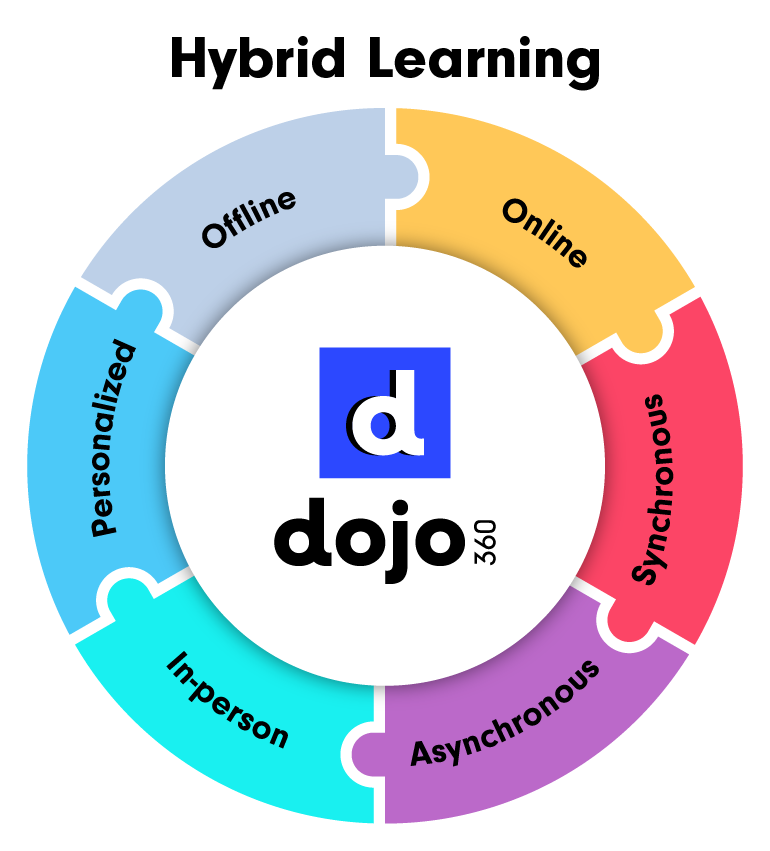Hybrid Learning: Unleashing the Power of ‘And’

Our family of 6 just returned from a holiday vacation in which we celebrated a couple of graduations—one college, one high school—amidst the fireworks and flags of a fun Fourth of July weekend.
[For our college grad, Independence Day took on a whole new meaning for all of us, but that’s for another blog . . .]
Of the many great conversations we had while hiking was one about the ensuing college experience our high school grad daughter was looking forward to this fall, and how different it would be compared to how her older sisters had spent the last 16 months of their college careers.
And while each of her older sisters had unique and sometimes complex Covid-College experiences as first-, third-, and final-year undergrads, a common Covid-Compromise was the binary nature of virtual vs. in-person learning.
While the first tranche of Covid-era learning and living skewed entirely virtual, with all of us in and outside the education space getting more fluent with Zoom et al. than we ever intended, most of the last academic year was presented to both college and high school students in an either/or context of learning: on-line or in-person. And even when instructors would attempt to orchestrate a hybrid approach, with students taking turns coming to class vs staying away, the experience was usually anything but consistent. Or fair.
It was a year of haves and have nots, with the only advantage to students being they eventually accrued the perspective and power to define which was the better ‘have’ for them. Some preferred their in-class/on-campus days, while others became accustomed (as did their matriculated corporate counterparts) to the temporal and autonomous benefits of virtual engagement.
Schools in K12 and higher education—including the one discussed on the aforementioned family vacation hike—have responded by making student choice central to the ‘new normal’ of learning, which on the surface seems nothing but contemporary, benevolent, and wise—especially as the market for students and workers is more competitive than ever.
So, while her older sisters had their learning environments thrust upon them in varying degrees of consistency and care over the last 16 months, our next and last collegian will have the control in her hands for presumably the next four years; choosing courses based as much on how the learning experience executes as what the learning goals are.
But a challenge to schools and employers alike in accommodating such choice in learning and working environments is when standards—be they academic, professional, or cultural—require uniformity in comprehension and adoption to be fully realized. Students (or their parents) don’t pay less for digitally delivered degrees, employees don’t become more or less virtually qualified, and neither campus nor corporate cultures are nurtured exclusively in augmented realities. There’s still one diploma bestowed, one paycheck earned, and one flag waving from the mast.
Instead, an authentic Hybrid approach to learning and working is required for our new normal: one that provides a level of choice for students and workers while ensuring an equitable, measurable standard of learning and experience for all.

Ironically (or not), that approach can be enabled with the right design and dosage of digital technology. Echo360’s EchoPoll, a new cloud-based learning and training software designed for K12, higher education, and business sectors, bridges the gap between in-person and on-line learning—not to perpetuate a false choice of either/or, but to deliver confidently on the ‘and’. With agnostic technology that interfaces seamlessly with existing LMS and presentation platforms and user-engagement tools that empirically measure learning efficacy and equity, EchoPoll is an example of a rather revolutionary—and entirely necessary—tool for our new normal of learning and working that allows for learning choices to be offered and made without compromise.
How are you ensuring equitable, engaging learning experiences in any environment? Tell us your ideas and stories here at turning-learning@turning.com
